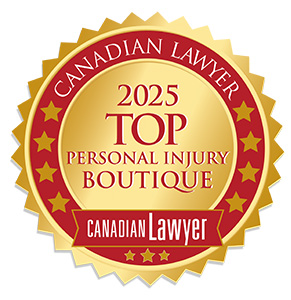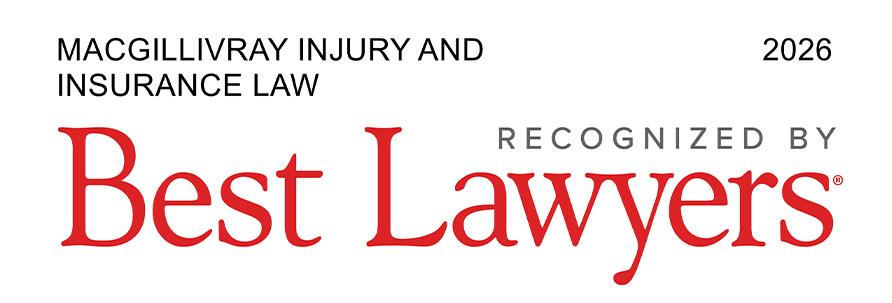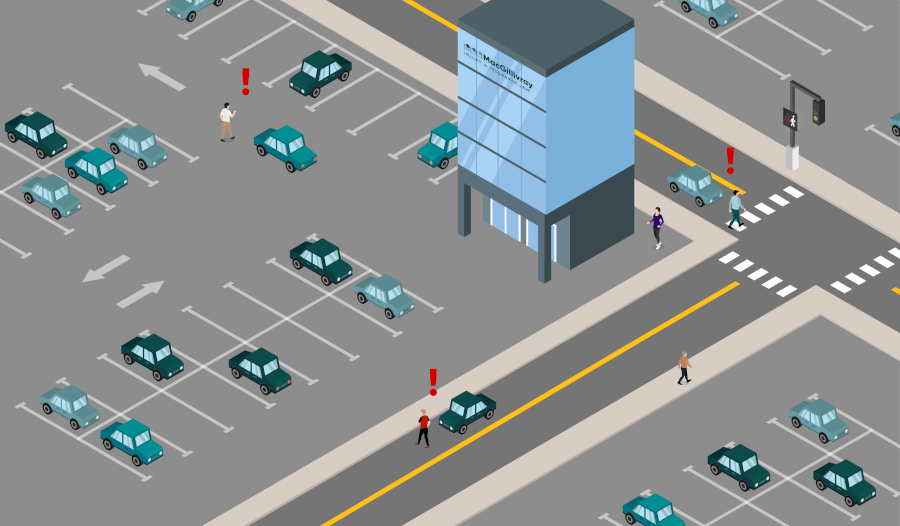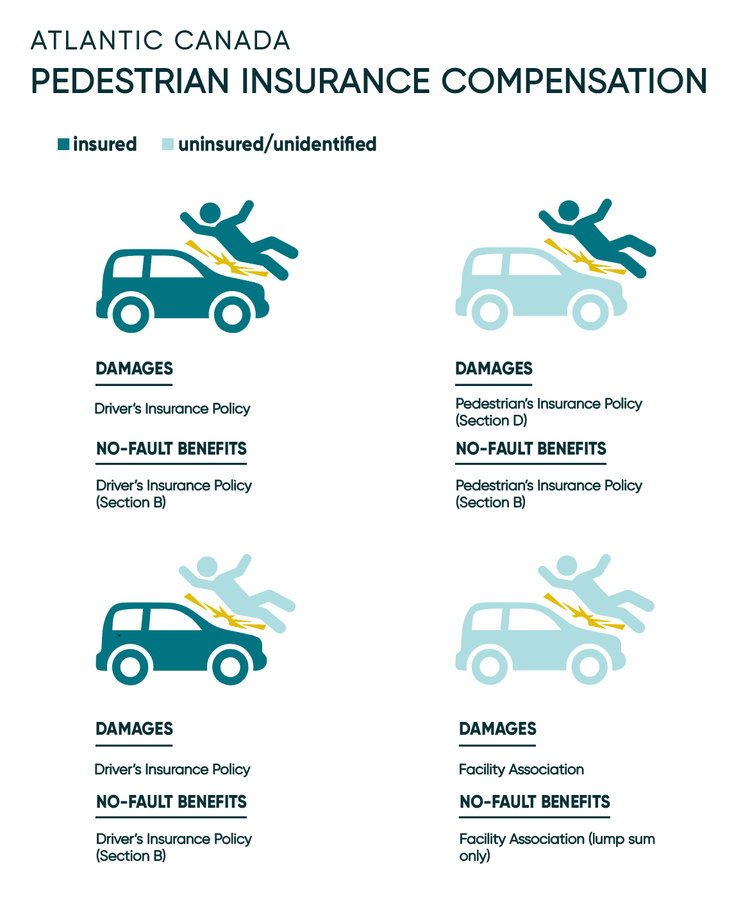




Both pedestrians and motor vehicles must abide by the rules of the road. However, pedestrians are in a vulnerable position relative to drivers. Because of the protection imbalance between a person seated in a vehicle and a person walking across a street, a car accident can easily cause serious injuries. Drivers must recognize their responsibility to obey traffic laws and share the road, while pedestrians must strive to stay safe and visible.
What should you do if you’re hit by a vehicle as a pedestrian?
After being hit by a car, truck, bus, or any other motor vehicle as a pedestrian, call emergency services if you can. They can provide immediate care and create a police report. This report could be vital if you decide to file a personal injury lawsuit later.
If you’re able, collect information at the scene. Note the driver’s name, contact details, insurance policy, and vehicle information. Get names and contacts of any witnesses and take photos if possible. These can help prove negligence if you pursue legal action. If you cannot get all these details, we can help you gather the information where possible.
Remember, in New Brunswick, you usually have two years to file a lawsuit if you’re injured in a car accident, according to section 5(1)(a) of the Limitation of Actions Act, SNB 2009, c L-8.5. However, there may be exceptions. It’s wise to consult an experienced pedestrian accident lawyer soon after the collision to protect your right to compensation. Schedule a free consultation to learn more.
Common accident injuries
Pedestrians lack the protection of seatbelts and car frames. In a collision, they are often propelled through the air or knocked onto the concrete, often causing more severe injuries than those inside a vehicle.
A recent study conducted in Toronto found that reducing posted speed limits from 40 km per hour to 30 km per hour on local roads decreased both the frequency and severity of pedestrian accident injuries.
Some common injuries arising out of pedestrian accidents, include:
- Fractures and broken bones
- Head trauma, including concussions and traumatic brain injuries
- Spinal cord injuries
- Psychological injuries, such as PTSD (Post Traumatic Stress Disorder) and anxiety
- Soft-tissue injuries, such as sprain and strains
- Scrapes, bruises, abrasions, and lacerations
After an accident, you might not feel pain right away due to shock. Some injuries might appear only later. It’s crucial to see a doctor promptly to diagnose and treat any injuries. If you plan to pursue an injury claim, the medical records will be key evidence. Consider scheduling a free consultation to explore your legal options.
Who has the right of way in New Brunswick?
In New Brunswick, according to the Motor Vehicle Act, RSNB 1973, c M-17, pedestrians often have the right-of-way, but they must also follow specific rules.
Crossing the street
In New Brunswick, pedestrians have the right of way at crosswalks, while vehicles have it on the rest of the streets. Crosswalks might be marked with white lines or unmarked at intersections. Some even have lights and signals to guide right-of-way.
New Brunswick’s right of way rules are set out in Sections 119, 120, 170, and 171 of New Brunswick’s Motor Vehicle Act, RSNB 1973, c M-17. Here is a simple breakdown:
- With a green light or “Go” signal, pedestrians may cross within any marked or unmarked crosswalk (Motor Vehicle Act, s. 119(1)(a)(ii)).
- A yellow or “caution” signal warns pedestrians not to begin crossing as there may be insufficient time to cross safely. If they do, they must yield to vehicles (s. 119(1)(b)(ii)).
- Pedestrians must only enter the roadway if they can do so safely (s. 119(1)(c)(ii)).
- If a “Walk” signal appears, pedestrians may proceed and have the right-of-way (s. 120(a)). A “Don’t Walk” signal prohibits starting to cross, but those already crossing must continue to safety (s. 120(b)).
- Vehicles must yield to pedestrians in a crosswalk, but pedestrians can’t suddenly enter traffic so that drivers can’t yield (s. 170(1)).
- Pedestrians must yield to vehicles if crossing outside of a marked or unmarked crosswalk (s. 171(1)).
These laws detail how pedestrians and drivers must interact on the roads in New Brunswick, emphasizing both safety and legal obligations.
Take the case of Burns v. Cormier, [2005] N.B.J. No. 569, as an example. Ms. Burns was crossing the street on a marked crosswalk at the intersection of Prince Edward and Union Streets in Saint John. The driver was fully stopped at a stop sign before Ms. Burns stepped off the sidewalk. When she was halfway across the street, the vehicle moved forward, hit Ms. Burns, and knocked her to the ground. The driver claimed he did not see Ms. Burns, but the court found the driver liable for the accident as he should not have proceeded until Ms. Burns was clear of the crosswalk.
Sidewalks
Pedestrians have the right-of-way on sidewalks, and they must use them when available (Motor Vehicle Act, RSNB 1973, c M-17, s 174(1)). If there’s no sidewalk, they should walk on the road’s far-left side, facing traffic (Motor Vehicle Act, RSNB 1973, c M-17, s 174(2)).
If you are injured on a sidewalk due to poor maintenance, you must notify the local government in writing within 90 days (Local Governance Act, SNB 2017, c 18, s 181(1)). Exceptions exist, such as if the claim relates to a death or if you are physically or mentally incapacitated (Local Governance Act, SNB 2017, c 18, s 181(2)). If you’ve been hurt due to government neglect, contact your local authorities quickly.
Parking lots
In parking lots, right-of-way usually goes to pedestrians in walkways, sidewalks, or designated areas. Both drivers and pedestrians must exercise caution, with drivers yielding to pedestrians and pedestrians using crosswalks and watching for vehicles.
The right-of-way in a parking lot is determined by where each individual is and how the traffic is flowing. However, as a general guideline, pedestrians are typically given the right of way in areas where they are walking, such as walkways, sidewalks, or designated pedestrian zones within the parking lot. Thus, fault will normally be attributed to the vehicle that struck the pedestrian, unless otherwise proven. Drivers should always yield to pedestrians and proceed with caution, while pedestrians should also be mindful of oncoming vehicles and follow any designated crosswalks or traffic signals within the parking lot.
In Collett v. Mattinson, 1993 CanLII 6810 (NBKB), Ms. Collett walked through a parking lot towards a grocery store when she was struck by Mr. Mattinson’s truck. The court found both the pedestrian and the driver at fault. She hadn’t ensured it was safe to cross, and he hadn’t checked before accelerating. The judge split the blame equally, awarding the pedestrian 50% of the total damages.
What does a lawyer need to prove on behalf of an injured pedestrian in New Brunswick?
In New Brunswick, if you’re injured in a pedestrian accident, it’s up to you to prove that the other driver was at fault. This means you must provide enough evidence to show that the driver didn’t take reasonable care, leading to the accident and your injuries.
What if the pedestrian was partially responsible?
Figuring out who has the right of way between pedestrians and vehicles is usually simple. Pedestrians have the right of way at crosswalks, with or without signals. But accidents still happen, and sometimes the pedestrian may share some blame.
This is called contributory negligence, and it means the pedestrian’s actions or lack thereof helped cause the accident. If a pedestrian is partly at fault, their compensation is reduced by the percentage of their blame. So, if they were 25% responsible for a $100,000 accident, they’d receive $75,000.
What might cause a pedestrian to share the blame? Factors include:
- Using a phone or texting while crossing
- Wearing headphones
- Crossing without the right of way
- Not checking for approaching vehicles
- Wearing dark, non-reflective clothing at night
- Walking on the wrong side of the street if there’s no sidewalk
In these scenarios, the pedestrian’s compensation would be adjusted according to their responsibility for the accident.
Contributory negligence doesn’t mean the victim is left without compensation. Rather, it reduces the amount awarded. A personal injury lawyer can help by collecting the necessary information and building a case to maximize the victim’s entitled damages. Even if some fault lies with the injured party, legal assistance can help in obtaining significant compensation. Book a free consultation to learn more.
New Brunswick case law examples on contributory negligence
Determining who’s at fault in pedestrian accidents requires examining the specific facts of each case. Every claim is unique, and the court may consider a range of factors to evaluate whether both the pedestrian and driver share responsibility. Case law examples, like the ones below, can highlight how these factors play out in real situations.
O’Donnell v. O’Blenis, 2004 NBCA 23
The defendant driver was stopped at a sidewalk outside a fast-food restaurant, checking for traffic to clear before pulling out. A pedestrian approached from the driver’s right and thought that traffic was too heavy for the driver to proceed. Despite knowing that the driver had not seen her, the pedestrian walked in front of the vehicle and suffered a knee injury. The trial court found the pedestrian 40% contributorily negligent for failing to keep a proper lookout. The Appeal Court agreed, noting that she should have known the driver was about to move and that she could have avoided the collision by walking behind the vehicle.
Patterson v. MacKenzie, 1972 CanLII 1638 (NBCA)
While crossing a traffic lane in front of a shopping centre, a pedestrian suddenly stepped in front of a car traveling 15 mph on a slippery, hard packed snow surface and was struck. The Court of Appeal ruled the driver was two-thirds at fault for driving too fast for the conditions. The pedestrian was found one-third at fault for not looking carefully enough before stepping out behind a parked truck and was awarded two-thirds of the damages.
How can pedestrians injured in an accident in New Brunswick be compensated?
If a pedestrian is injured in a car accident, financial compensation through insurance is available. This can cover different types of damages, including pain and suffering, lost wages, reduced ability to do household chores, future medical care, and out-of-pocket expenses like medical costs. Certain benefits, such as income replacement and some medical coverage, are available regardless of fault through Section B insurance.
Unlike typical car accidents involving drivers or passengers, where individuals are covered by their own auto insurance policies, insurance coverage for pedestrians may vary, adding a layer of complexity to the situation.

Insured pedestrian
If a pedestrian has car insurance, either individually or as a dependent, seeking damages depends on the driver’s insurance. If the driver is insured, their policy will cover the pedestrian’s damages and Section B benefits. In a situation where the driver is uninsured or unknown, like a hit-and-run, the pedestrian’s own insurance will provide compensation, as per New Brunswick’s Insurance Act.
Uninsured pedestrian
If a pedestrian lacks insurance, getting compensation depends on the driver’s insurance. If the driver has insurance, that policy will cover the pedestrian’s damages. If the driver isn’t insured or is unknown, the Facility Association will provide coverage. Even without the pedestrian’s own insurance, Section B benefits, including income replacement and medical coverage, can be negotiated as a lump sum with the Facility Association.
Our experienced personal injury lawyers can help you navigate your claim for compensation.
Standard policy in New Brunswick
https://fcnb.ca/sites/default/files/2020-05/Standard%20Owners%20Policy.pdf
Have questions for our team?
Frequently Asked Questions
What Our Clients Say...
Request a
Free Consultation
If you would like to learn your legal options at no obligation, contact us today to set up a free consultation.




